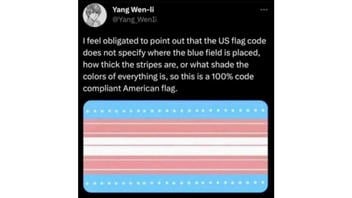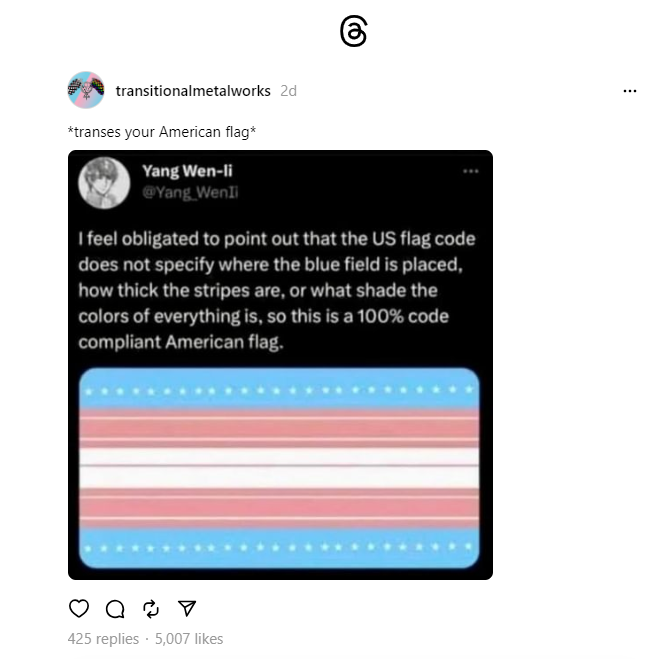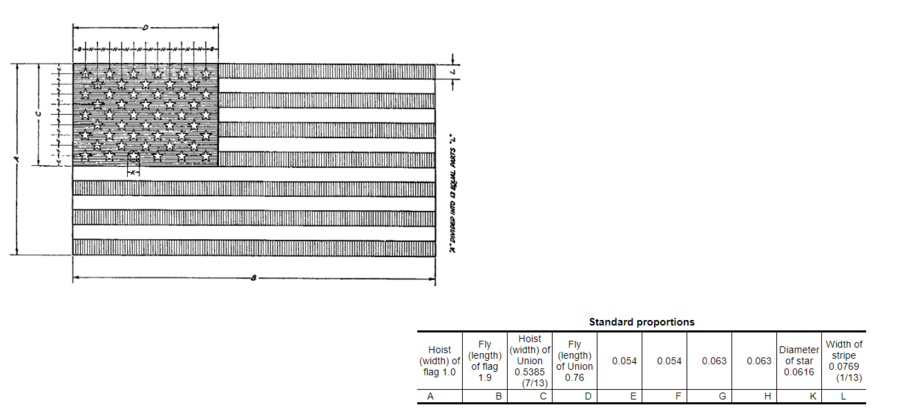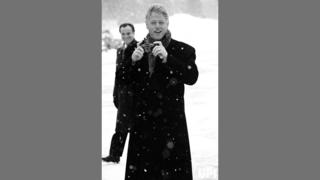
Does the U.S. flag code fail to specify important attributes of the U.S. flag, like where the "blue field" should be located and how thick the stripes should be? No, that's not true: Through the inclusion of an executive order, the flag code contains a diagram of exactly what the flag should look like. The flag code is usually invoked in reference to the display of or respect toward the flag, not its appearance.
The claim appeared in a post (archived here) published on Threads on April 1, 2024. The post included a screenshot of a post (archived here) made on X on June 5, 2023. The screenshotted post featured an image of a modified transgender flag and text that read:
I feel obligated to point out that the US flag code does not specify where the blue field is placed, how thick the stripes are, or what shade the colors of everything is, so this is a 100% code compliant American flag.
This is what the post looked like on Threads at the time of writing:

(Source: Threads screenshot taken on Thu Apr 4 19:16:47 2024 UTC)
The U.S. flag code is mostly outlined in U.S. Code Title 4 ("Flag And Seal, Seat Of Government, And The States"), Chapter 1 ("The Flag") (archived here), which contains Sections 1 through 10. Section 5 ("Display and use of flag by civilians; codification of rules and customs; definition") opens (bolded emphasis by Lead Stories):
The following codification of existing rules and customs pertaining to the display and use of the flag of the United States of America is established for the use of such civilians or civilian groups or organizations as may not be required to conform with regulations promulgated by one or more executive departments of the Government of the United States. The flag of the United States for the purpose of this chapter shall be defined according to sections 1 and 2 of this title and Executive Order 10834 issued pursuant thereto.
In other words, the flag is defined by Section 1, Executive Order 10834 and Section 2. The executive order is included as a note in Section 1.
Executive Order 10834 ("Proportions and Sizes of Flags and Position of Stars") is perhaps the most important piece in debunking the claim. It contains three parts, one of which is relevant to this fact check. Part I ("Design of the Flag") of the executive order states:
Section 1. The flag of the United States shall have thirteen horizontal stripes, alternate red and white, and a union consisting of white stars on a field of blue.
Sec. 2. The positions of the stars in the union of the flag and in the union jack shall be as indicated on the attachment to this order, which is hereby made a part of this order.
Sec. 3. The dimensions of the constituent parts of the flag shall conform to the proportions set forth in the attachment referred to in section 2 of this order.
The attachment referred to in Part I of the executive order contains a diagram that shows what the flag is supposed to look like. A screenshot of that diagram is included below:
(Source: U.S. House screenshot taken on Thu Apr 4 22:09:03 2024 UTC)
Thus, the executive order indicates that the flag should look like the diagram.
Although not particularly relevant to this fact check, Section 2 ("Same; additional stars") of U.S. Code Title 4 is included below, since it also contributes to how "the flag" is defined in Chapter 1 of the title. It states:
On the admission of a new State into the Union one star shall be added to the union of the flag; and such addition shall take effect on the fourth day of July then next succeeding such admission.
Typically, the phrase "U.S. flag code" is cited in issues related to the display of and respect toward the flag, as outlined in a Congressional Research Service report titled "The United States Flag: Federal Law Relating to Display and Associated Questions" (archived here). According the report, such concerns are addressed in U.S. Code Title 4, Sections 4-10 and U.S. Code Title 36, Section 301. The report also notes that the flag code "does not prescribe any penalties for non-compliance nor does it include enforcement provisions; rather the Code functions simply as a guide to be voluntarily followed by civilians and civilian groups."
Lead Stories reached out to the author of the report for comment on the claim and clarity about the flag code. We will update this story with any relevant response.















